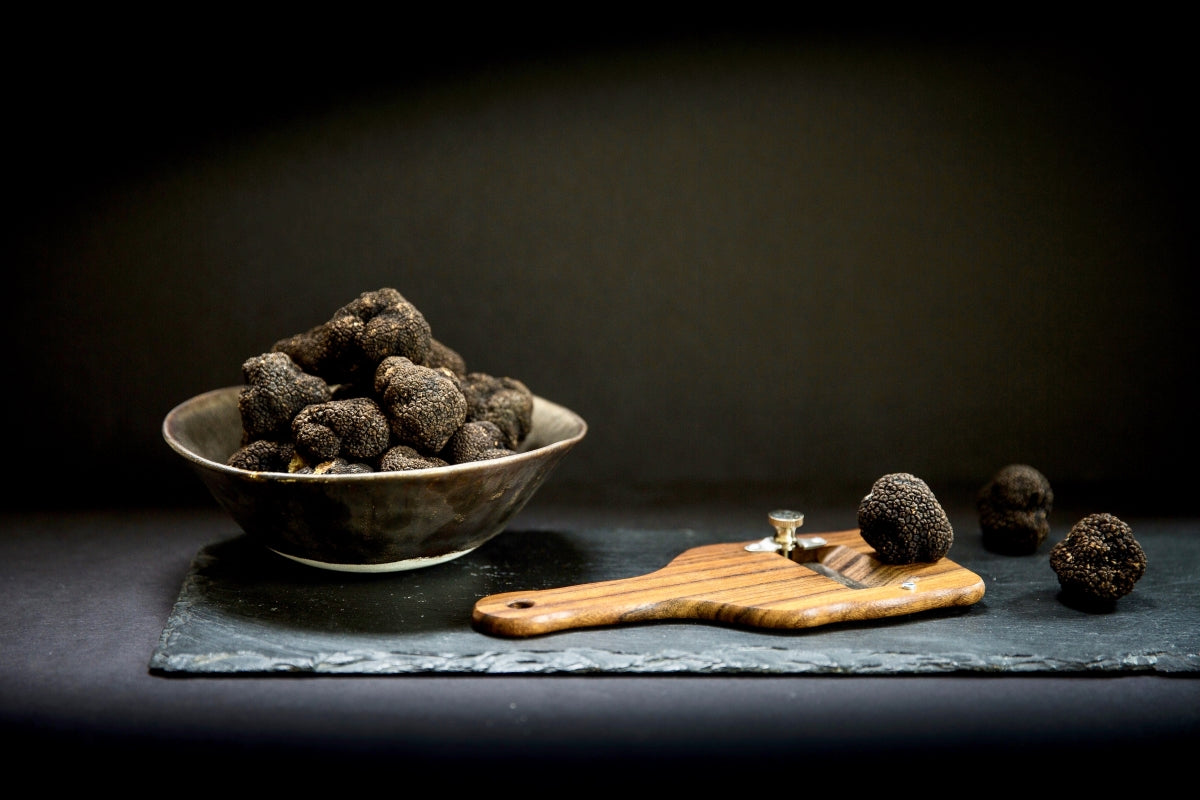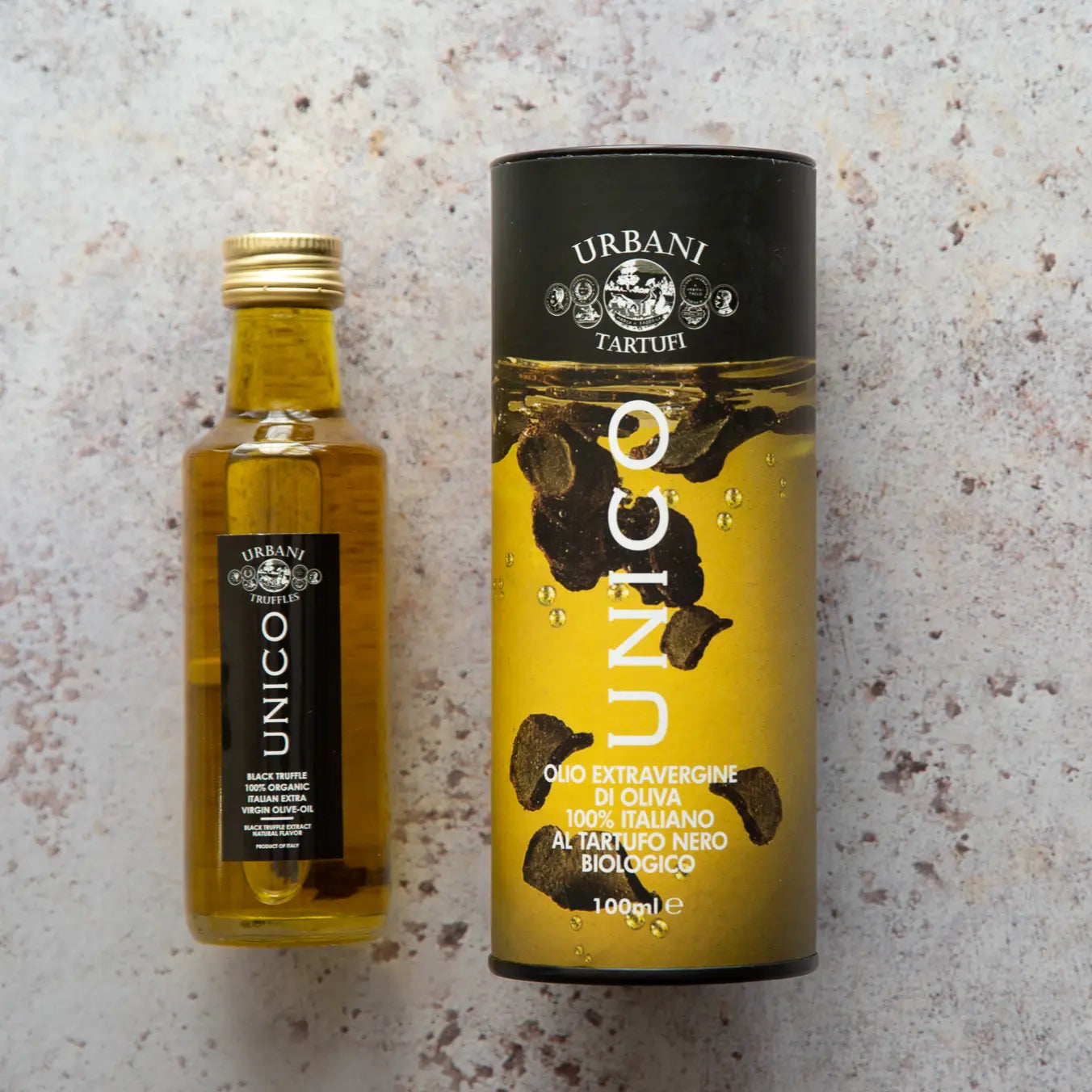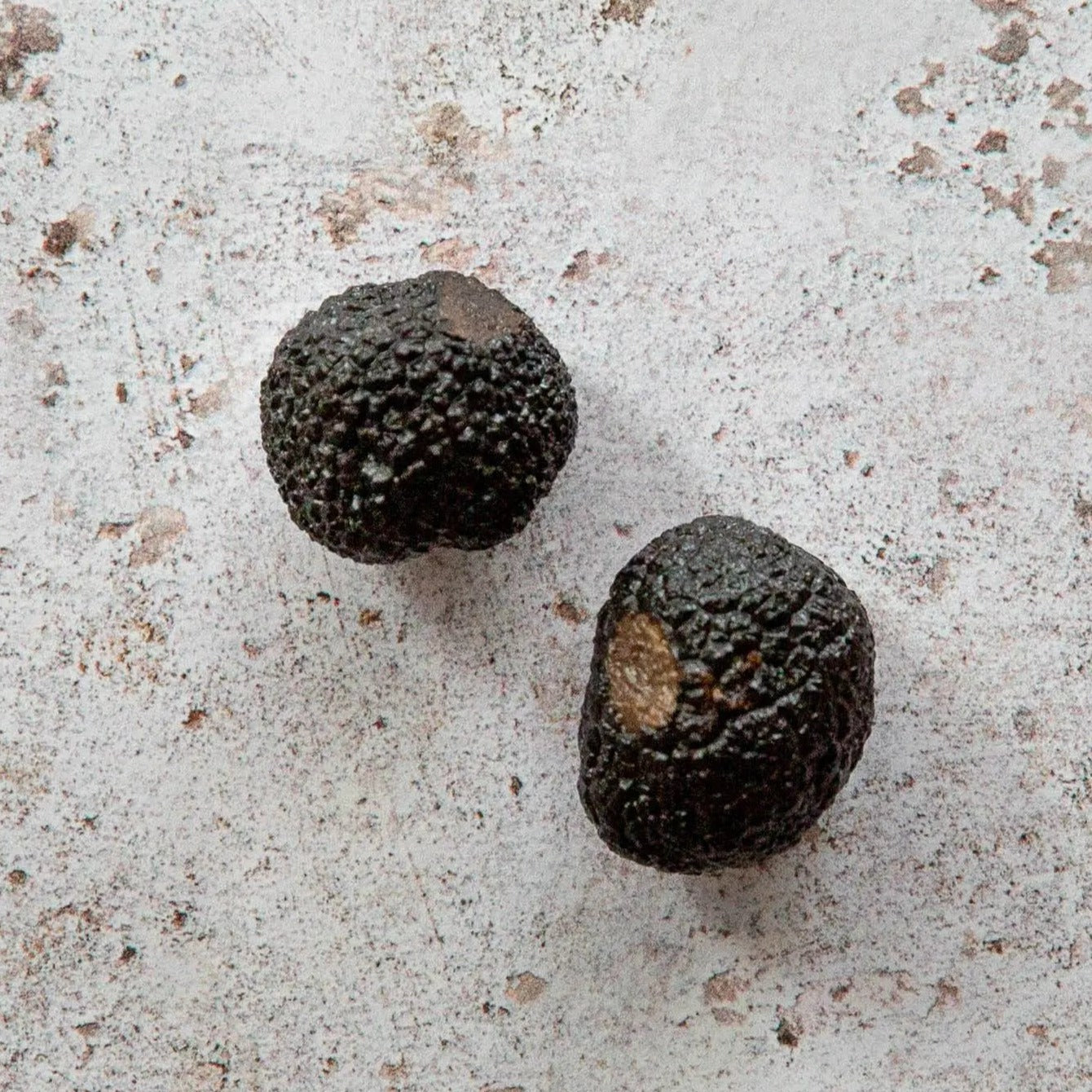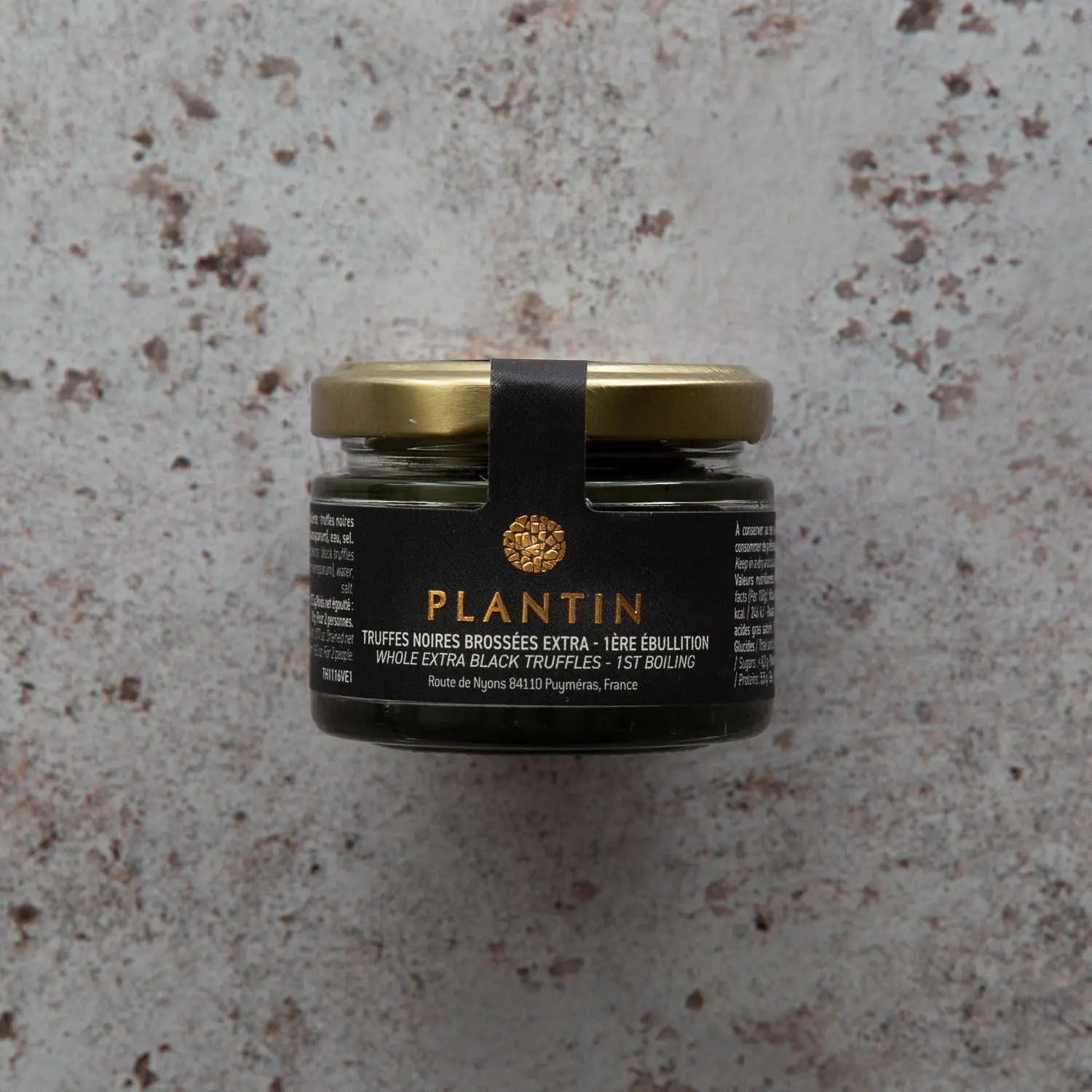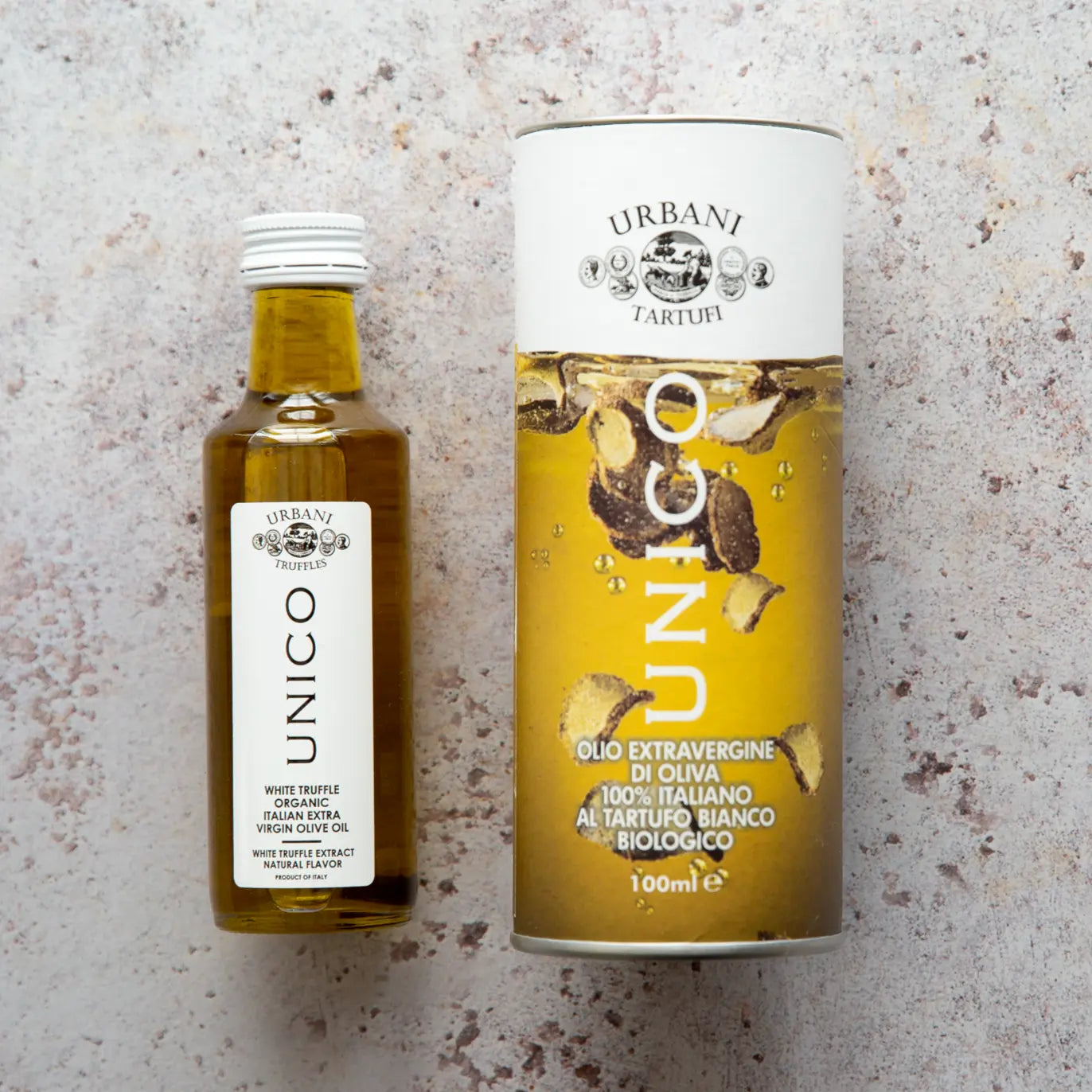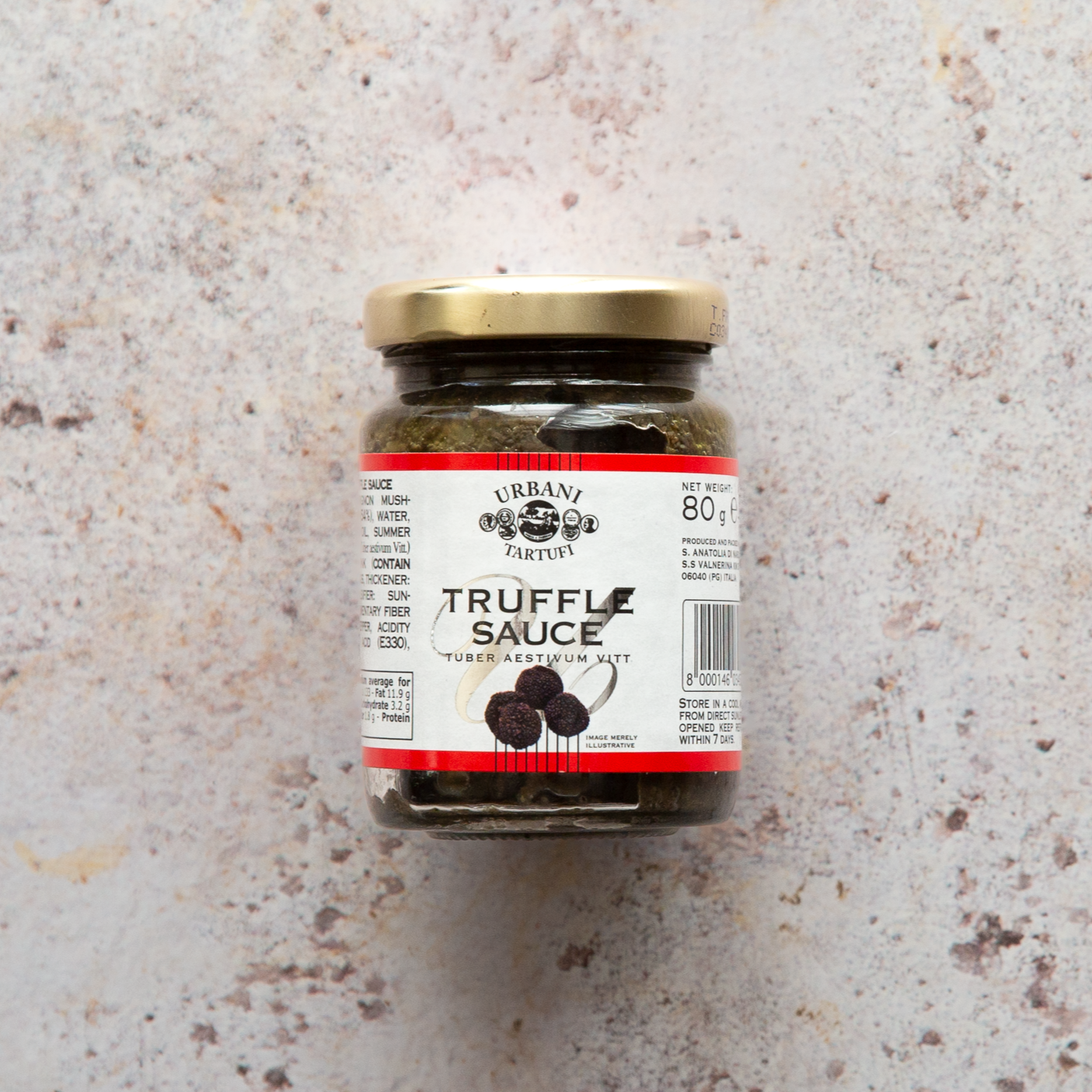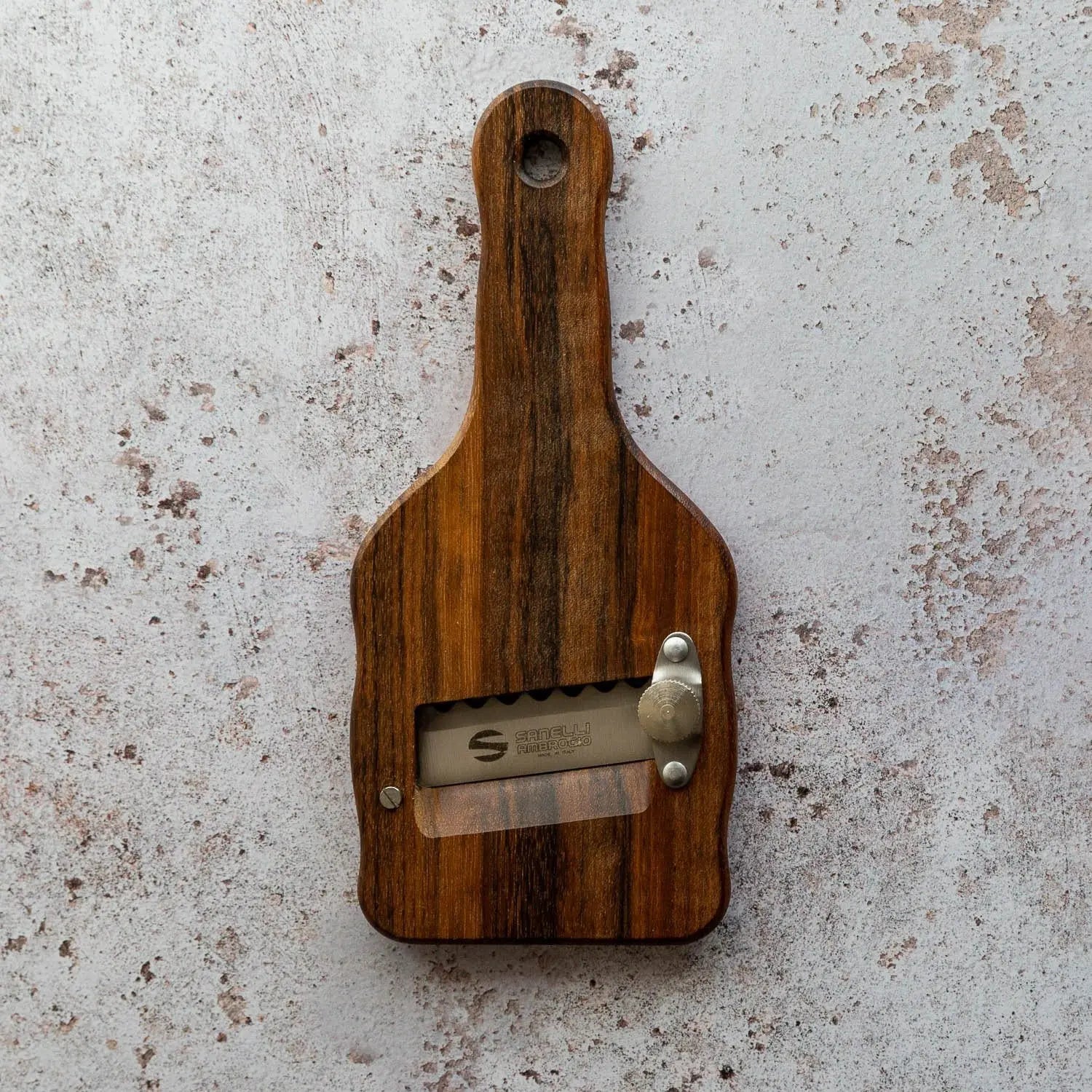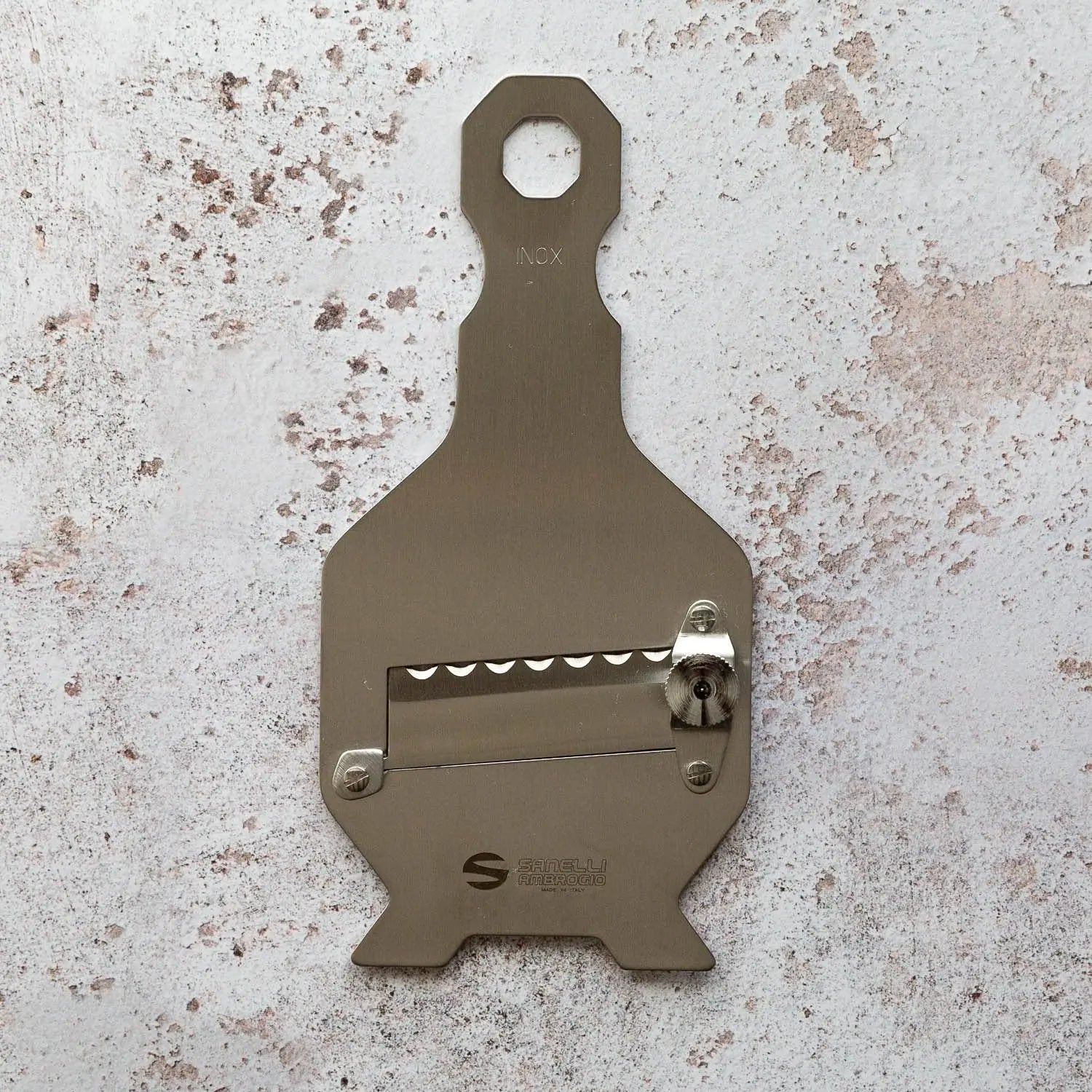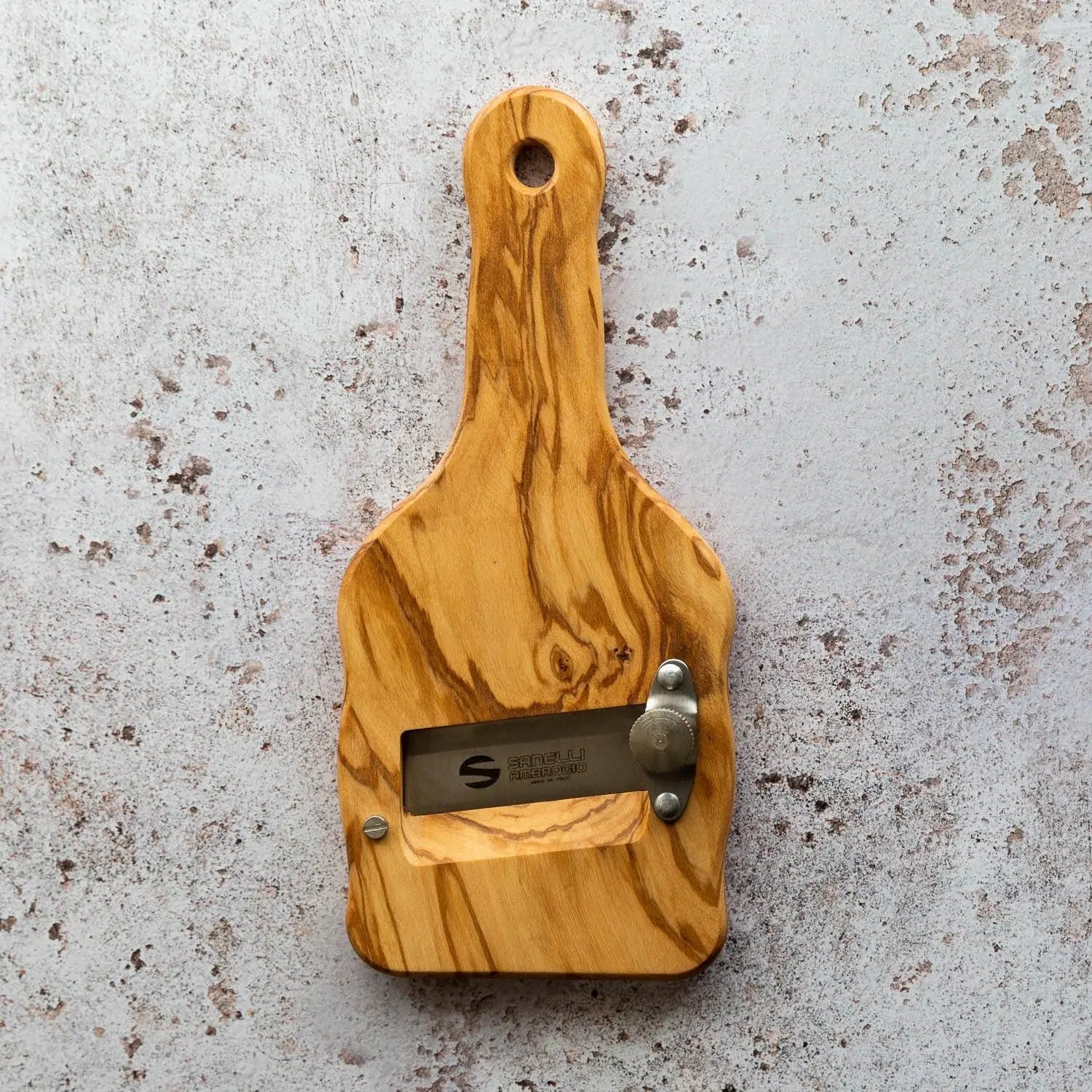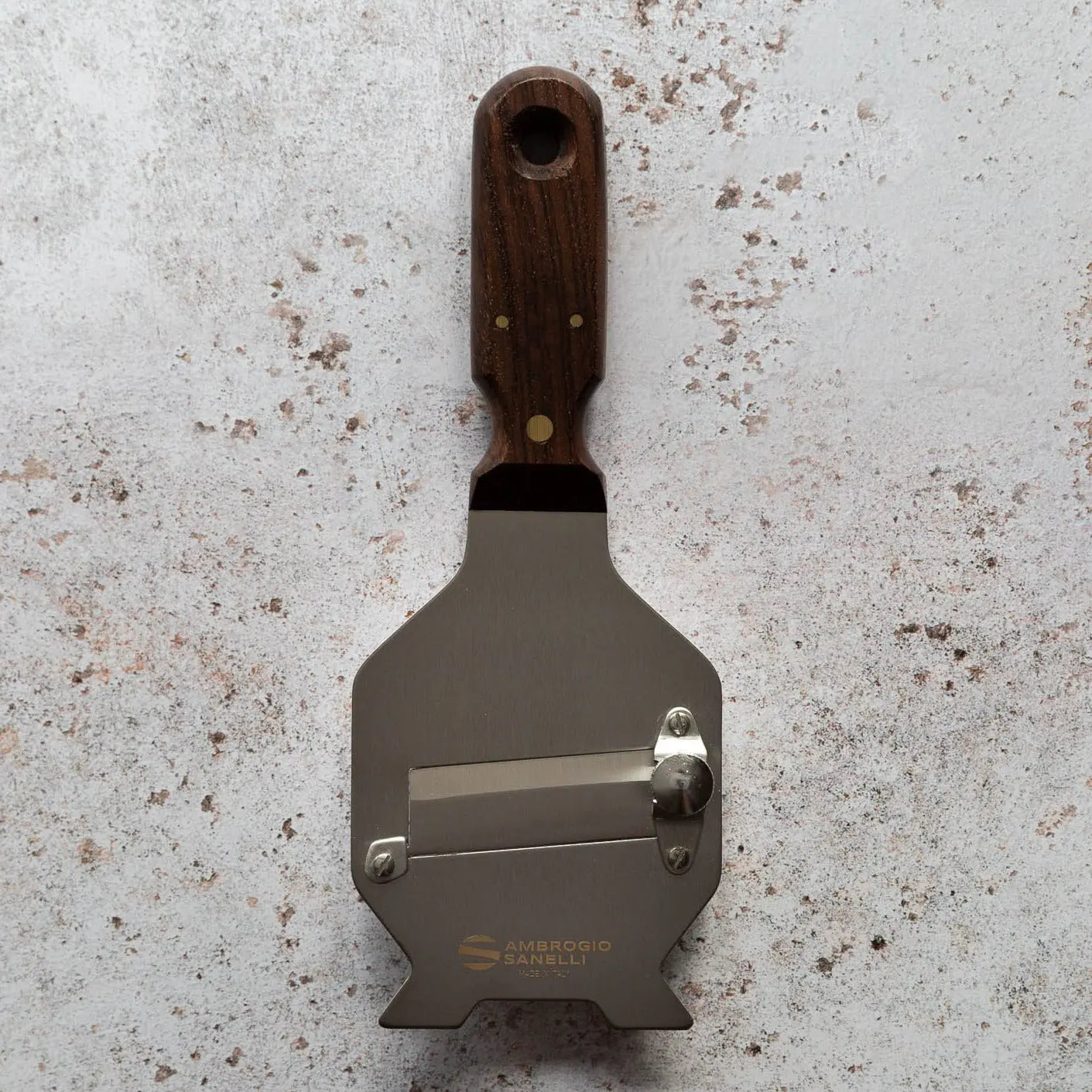HOW TO USE FRESH TRUFFLES
Truffles are underground fungi that have a mycorrhizal relationship with the host tree where they grow. They flourish slightly beneath the surface of the earth, growing on the roots of different trees. Truffles are irresistible because their aroma is composed of chemicals that mimic mammalian reproductive pheromones. Eating, even sniffing a truffle brings about euphoric dizziness that can be truly addictive.
They are expensive because they are difficult to cultivate, hard to find in the wild, incredible to eat and in high demand. There are lots of species, but the two most sought-after are the powerfully flavourful Tuber Magnatum Pico, (the Italian white Alba truffle), and the Tuber Melanosporum Vitt. (the Périgord black truffle).
LIFECYCLE
Truffles must live in symbiosis with trees or shrubs in order to produce precious Sporocarp. Exchange of substances between truffle and plant takes to placate the root level via a structure known as MYCORRHIZA. Mycorrhiza is a kind of coupling formed by networks of branched, tubular filaments called HYPHAE, which wrap around the end of the tree’s terminal rootlets and, penetrating the first levels of root cells, form a network called MYCELIUM. Through this connection, the plant offers various substances to the fungus, receiving in exchange water and mineral salts. Many hyphae split off from the network and spread out, branching into the soil, in search of nutrients.
When the environmental conditions are right, a number of hyphae interlace and produce a fruiting body, with the gleba containing the spores. When the spores germinate they produce a new mycelium, Hypogynous (underground) fungi cannot take advantage of air currents to spread their spores. Instead, evolution has given them a strong odour, perceptible only when the spores mature, which attracts insects and mammals who feed on the truffle and spread the spores.
HISTORY
The unravelling of some of the biological mysteries of truffles has been paralleled by dramatic growth in their culinary stature, from being a food source for peasants in the dark ages to become an obsession in higher circles of society, well known French gourmand Jean Brillat-Savarin (d.1826) hailed them as the ‘jewel of all cookery'.
The early 1800s may be referred to as the ‘golden age of truffles’, particularly in France where a heightened appreciation for them was more readily matched by supply than at any other time in history. A recipe in Mrs Beeton’s first cookbook (1861) listed among ingredients a ‘dozen fine black truffles’ such was the abundance at the time.
The popularity of truffles reached a peak in the late 19th century. Brillat-Savarin noted that merchants, aware of their popularity stimulated the market by paying good prices for truffles at the source and using the fastest transport available to send them to Paris. With a steady market demand then came the desire to increase supply, attention turned to the truffle harvesters holy grail - artificial systematic cultivation.
CULTIVATION
The first step to cultivation was discovered by chance by planting acorns from oak trees infected with truffles in nearby land containing siliceous, stony earth. A few years later the first cultivated truffles appeared from under the young oak trees. By 1890 there were 750 square kilometres of truffières in France.
The method of cultivating truffles this way was still favoured up until the middle of the 20th century, however, the technique was badly flawed, the seedlings were overrun with insects, pests, and faster-growing contaminating fungi. By 1960 the collapse of the European truffle industry was well underway.
By the end of the 1960s, French and Italian scientists had devised methods of for producing truffle-infected plants under controlled conditions in greenhouses by inoculating plants with pureed truffle, truffle spores, cultures, or sections of infected root. Eventually, their perseverance was rewarded and in December 1977 the first cultivated truffles using this method were harvested in France. Truffle cultivation is where almost all of the world’s black truffle harvest comes from, France, Italy, Spain and Australia being the main exports of fresh Black Truffles.
SCIENCE
Botanically, the truffle is a fruiting body that develops on mycelium, the fine web of filaments that bonds itself to the roots of different trees known as mycorrhiza. Truffles are host specific and the relationship is symbiotic, both parties benefit, though, in the long run, it suits the guest rather than the host.
While lesser European truffle species go for beech and fir, the Périgord Black Truffle (Tuber Melanosporum) prefers oak, and lime, while Poplar and Hazel appeal more to the Alba white (Tuber Magnatum Pico.) While the former like air and light and forms its own burnt patch under its host, the second needs semi-shade and the presence of bushes to provide a shady understory. Both need chalky soil, marginal land, the right degree of rainfall, and peace and quiet, the white is ecologically pickier than the black and takes longer to come to maturity and fruit. Of these two big hitters of the truffle trade, only the Périgord black is in successful cultivation.
THE HUNT
To track down a truffle, a truffle hunter or ‘triolao’ requires the help of a dog with an excellent sense of smell, trained to recognise the scent of the fungus.
Truffle hunters must have a special permit for which they pay an annual fee. They must also follow harvesting calendars for the different Tuber species, which vary for every region where the truffles can be found.
When a dog smells a truffle in the forest, it notifies the hunter, who uses a special blade to extract it with great delicacy. To allow the formation of new rootlets, it is of utmost importance that the hunter replaces any first removed. Then hopefully a new fruiting body will form.
HOW TO FIND TRUFFLES
Host plants are species-specific, identifying the right tree is of huge importance also is the time of year, climate, altitude and growing conditions.
Burgundy or summer truffles (Tuber Aestivum) are found throughout Europe, from May until September and are associated with beech, birch, hornbeam, hazelnut and English oak.
In the UK the British Mycology Society has records for the Burgundy truffle found in Gloucestershire, Hampshire, Herefordshire, Hertfordshire, Kent, Nottinghamshire, Oxfordshire, Shropshire, Somerset, Surrey, Warwickshire, Sussex, Wiltshire and Yorkshire. Some of the largest collections on the record are 65 kg in Somerset under holm oak and 80 kg under European beach in Wiltshire.
The English truffle hunt must start from scratch. First, the terrain must be suitable - patience is essential - the host trees listed above must be present. Next, it’s a matter of selecting a likely tree - sparse undergrowth and slight balding of the moss and grass in a root-wide radius around the trunk is a good indicator. In the likely scenario that you are trying to find truffles without a pig or a well-trained dog, it’s on your knees, feel delicately under the surface layer of moss and leaf-debris until your hand encounters a firm lump. This would either be a lump of grass, a stone or if luck is with you a spherical tuber!
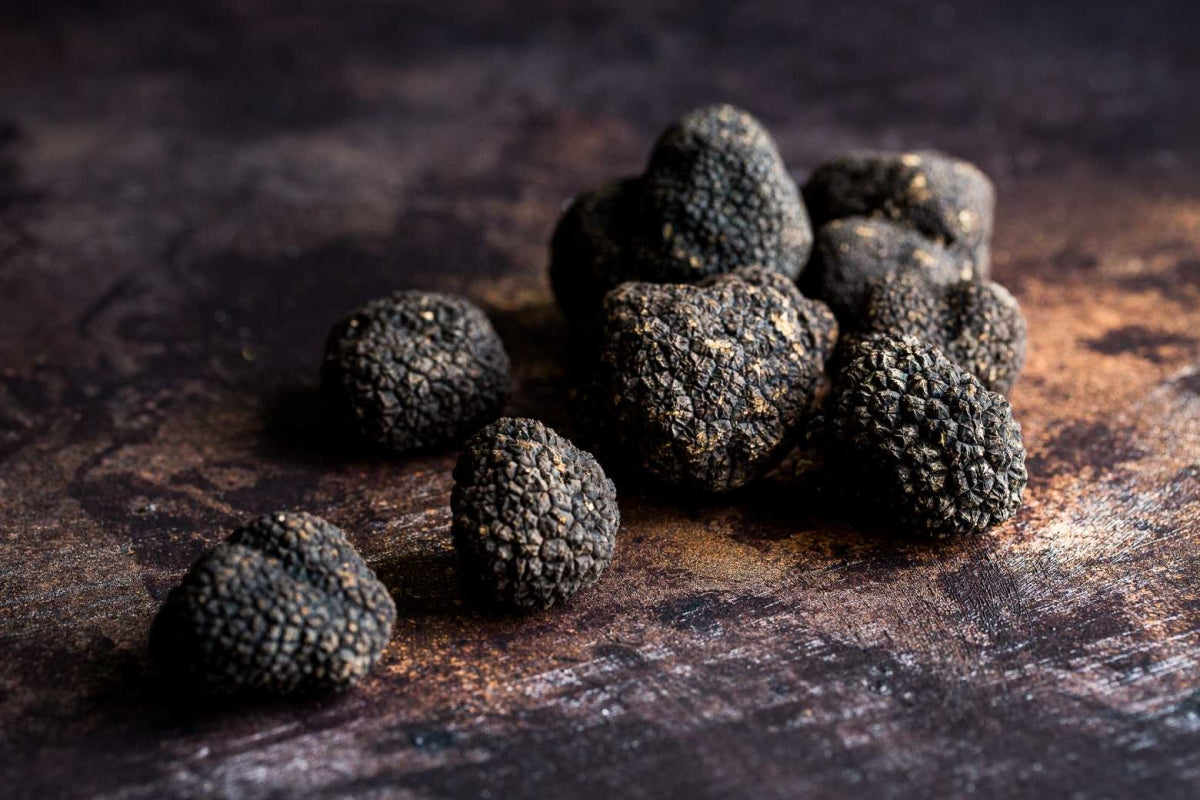
TRUFFLES IN THE KITCHEN
In the last century, truffles became world-renowned, setting a trend in all four corners of the earth. The great versatility and the ability to make every dish unique contributed to making this underground mushroom truly special. As little as ten grams of it are enough to enhance any course. New truffle based recipes are created thanks to its versatility and its ability to enhance any dish, including those that were not originally meant for it.
Here are some tips on how to enjoy fresh truffles: Shaved with a specific truffle shaver on dishes that are preferably mild in flavour, the best vehicle to appreciate the truffles articulate, intense and powerful aroma. Among other courses, fresh truffles will pair beautifully with beef tartare, fried eggs, tamarin pasta and cheese fondue.
UNIVERSAL RULES
Fresh truffles tend to infuse their aroma to everything around them, which is why they work perfectly with ingredients that are submissive and agreeable to let the truffle take centre stage. Fats work perfectly with truffles and help bring the full flavour out, which is why truffles are usually paired with fatty foods like butter, cheese, cream, and oils. Whichever kind of truffle you’re using, this rule works.
Pasta, rice, potatoes, bland foods are brilliant to bring out the delicious flavour of the truffle. You always want to maximise the truffle flavour, using the least amount of the ingredient as possible, so always slice them paper-thin using a truffle slicer and let them work their magic. As for quantity, typically use 8-10 grammes of truffle per person.
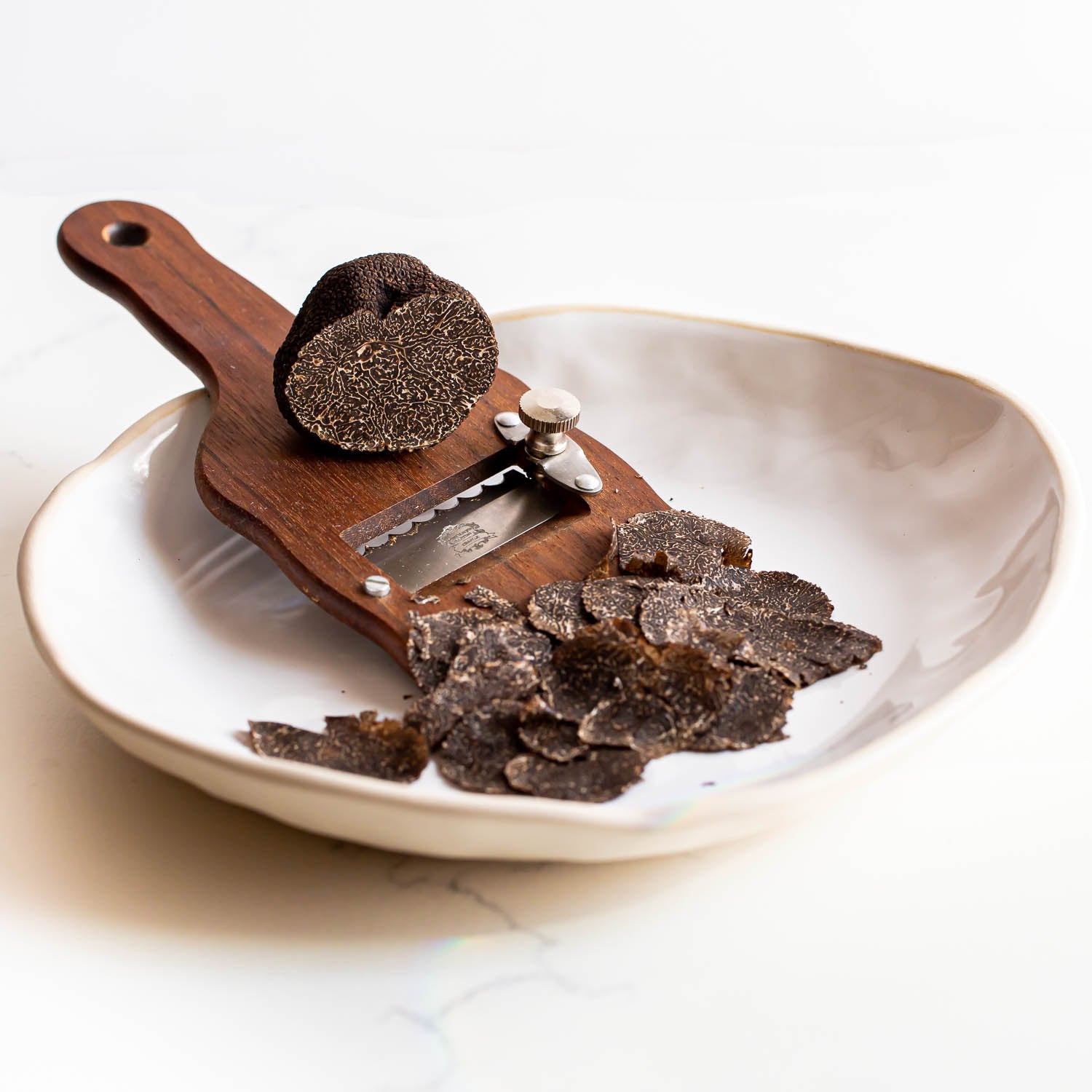
COOKING WITH BLACK TRUFFLES
This famed truffle is the prize ingredient of chefs everywhere. While you will find many connoisseurs have different opinions on the preparation of Black truffles, there are some universally respected precepts: Black Truffles are best if used when cooking a dish, and added towards the end as their aroma and flavour are long-lasting, and will seep into your preparation.
The French adore their Périgord diamond when used in scrambled eggs or an omelette, as eggs easily assimilate the subtle earthy flavour of black truffles. This is also a very easy way of using black truffles since it leaves almost no room for error. Most vegetables with clean, fresh flavours contrast nicely with the intensely pungent essence of truffles, especially celery root, leeks and cabbage.
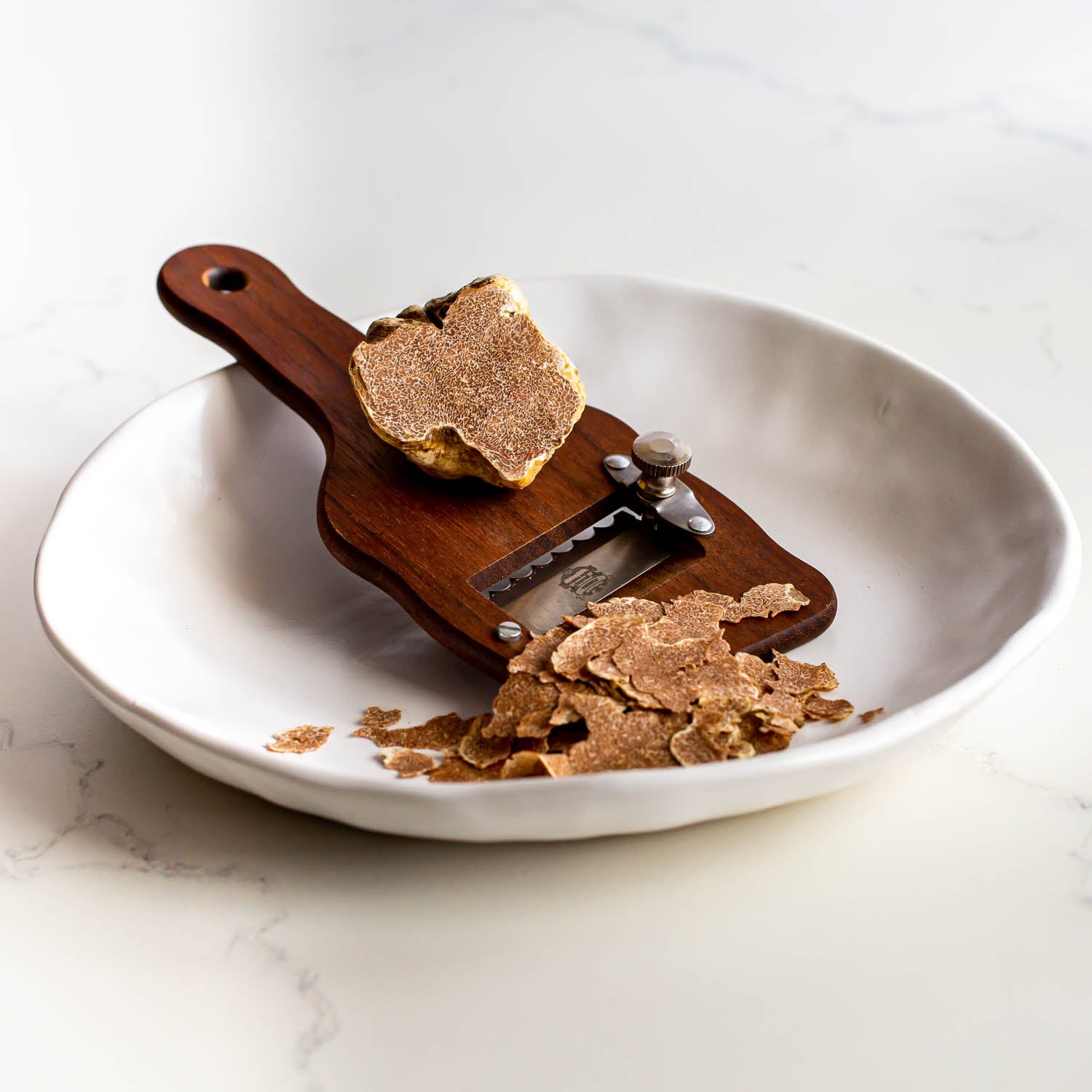
Cooking with White Truffles
Because they are so aromatic and pungent, but their aroma tends to fade relatively quickly, white truffles should NEVER be cooked. Keep it simple. Slice or shave over some cooked like risotto or pasta and you’re done. They should never be mixed with any ingredient high in acidity, which would cause the flavour of the truffle to subside. Let the truffle work its magic, and always add at the end of the preparation.
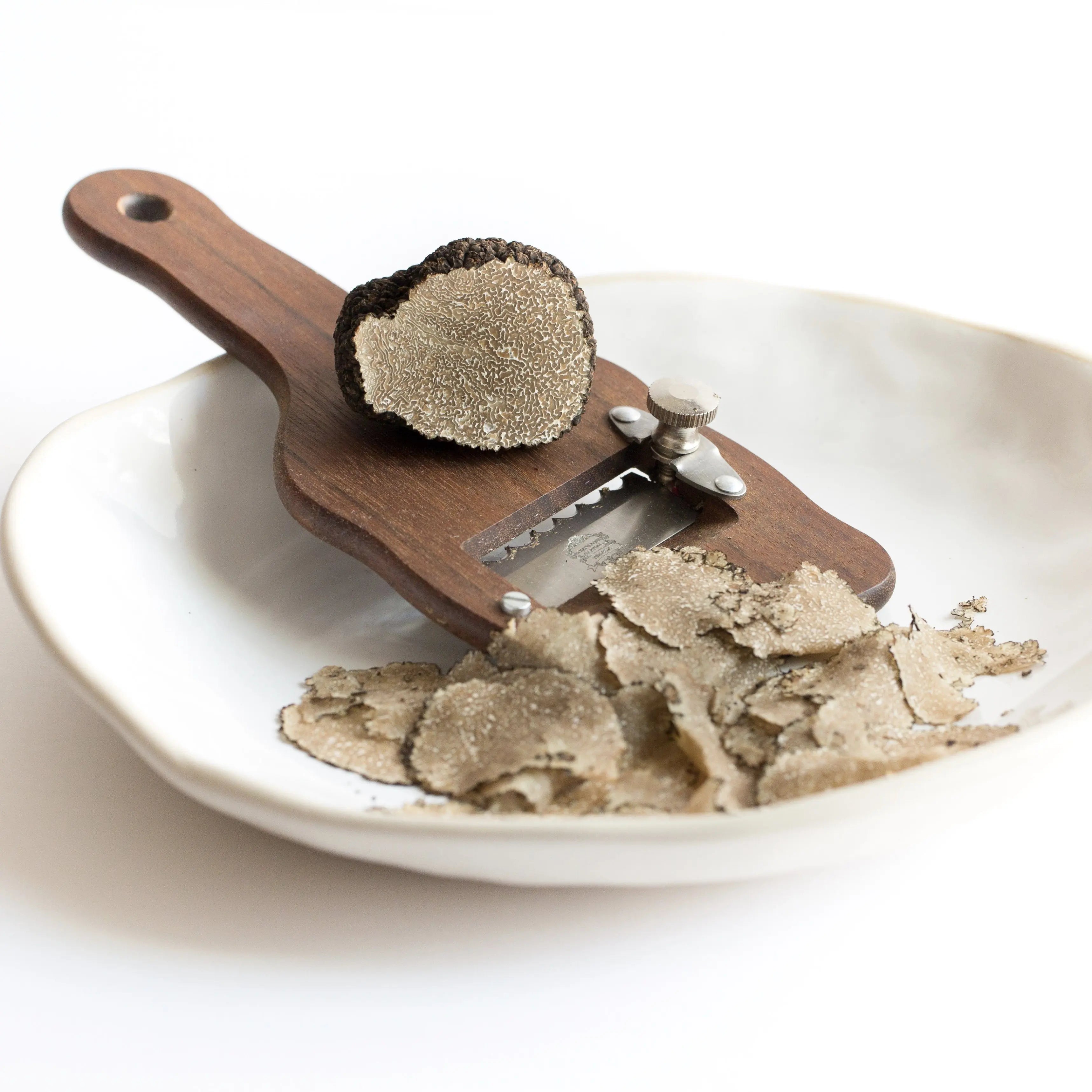
Cooking with Summer & Autumn Truffles
Since summer and autumn truffles are the less expensive of the bunch, you can be more creative and use them more abundantly. Basically, follow the instructions for black truffles, but feel free to experiment with different recipes and ingredients, always remembering the flavour will be much more subtle than the winter variety, so it won't be as spectacular. Both summer and Autumn truffles are better when the tough outer peridium is gently scraped away with a pairing knife as on most occasions it can be tough and bitter which takes away from the delicate caramel, vanilla notes of the interior.
CARE FOR YOUR TRUFFLES
Fresh truffles have a short shelf life and should be eaten as soon as possible to enjoy at their best. Truffles are typically more than 70% water and will naturally lose 2 or 3 % of their body weight per day (moisture). If you wait too long, they will rot or dry out.
CLEANING & STORAGE
The truffles we supply have been brushed, and any loose soil removed. However, you will need to wash them briefly under cold running water using a small brush (e.g. a toothbrush) then dry them carefully with a kitchen towel. Allowing them to reach room temperature before use maximizes the flavour of the fresh truffle.
The truffles we supply arrive with you in sealed foil pouches to keep them fresh, though you may want to place them in a "TuberPac™ Fresh Truffle Storage Container" or Tupperware box or glass jar, lined with a kitchen towel. Close the lid tightly and put in the refrigerator.
Consume them as soon as possible as we only stock truffles that are fully mature so any delay in eating will be a detriment to their wonderful aroma. If not eating straight away check them daily, wipe away any condensation that collects inside the container and change the kitchen towel. If they grow a little white mould (harmless) clean them as above. For best results consume within three days.
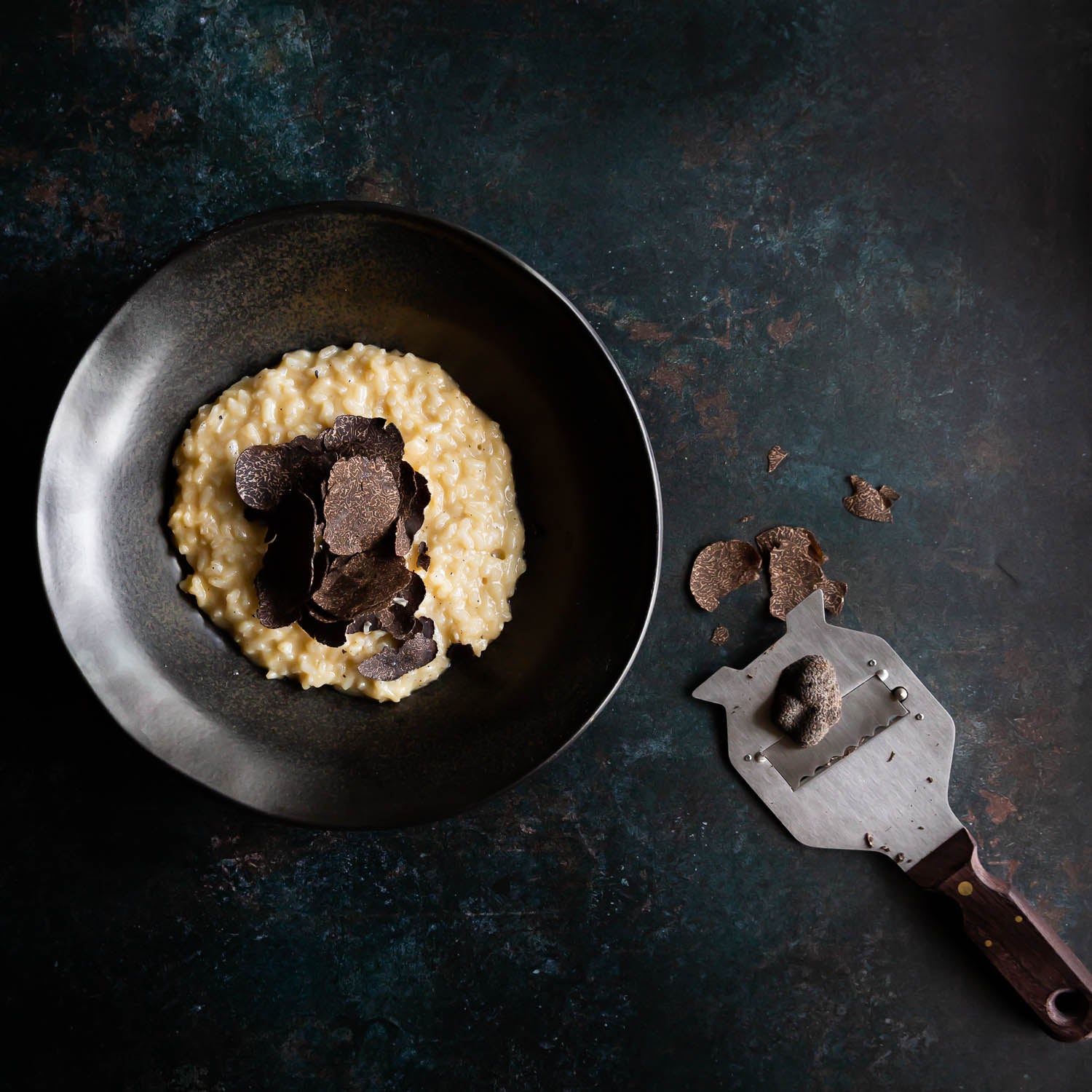
BLACK TRUFFLE RISOTTO
GET the Recipe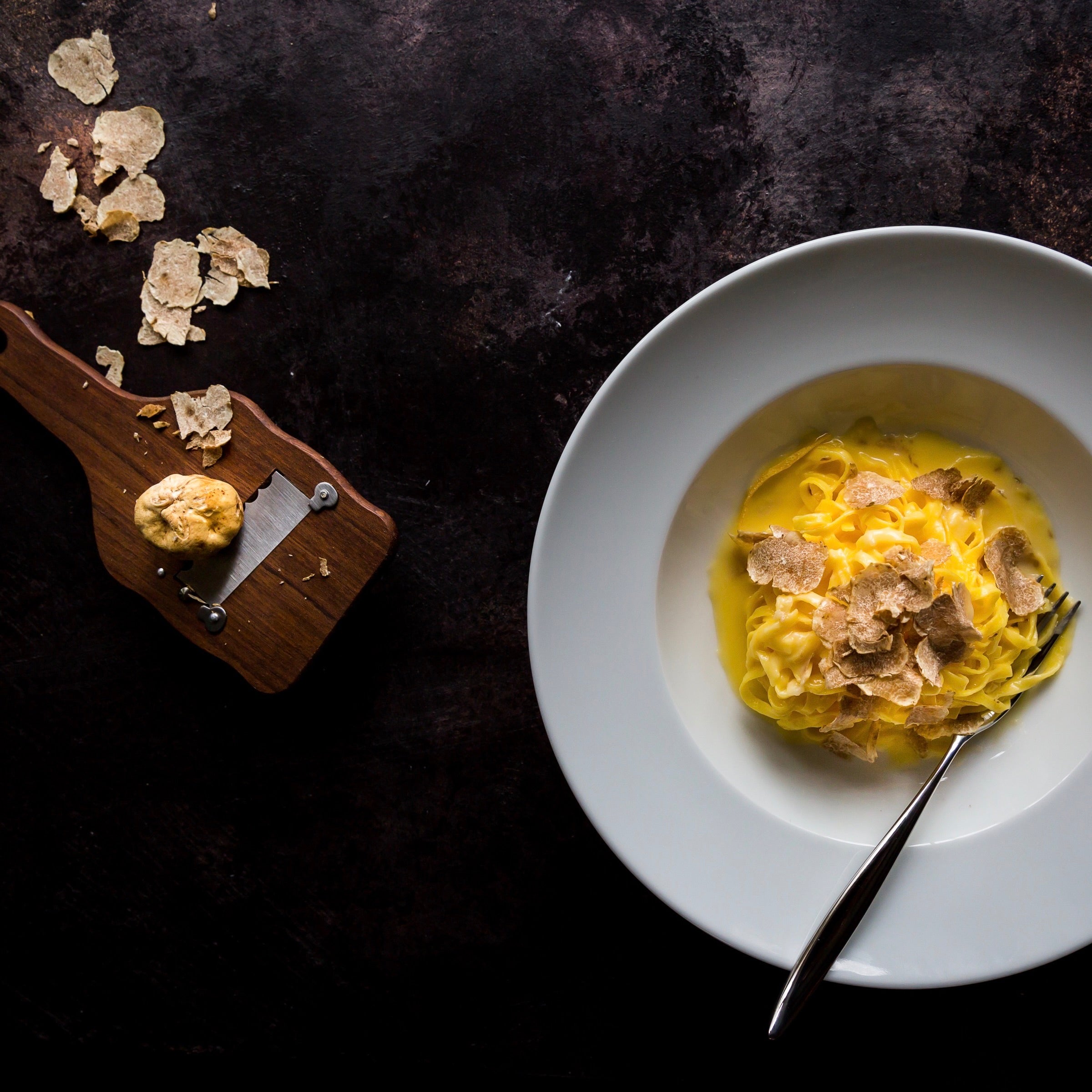
WHITE TRUFFLE FETTUCCINE
GET THE RECIPE

